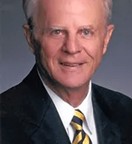John Paul Shock
John Shock, M.D.
started his military career after graduating from the United States Military Academy, West
Point, New York in 1959 as Second
Lieutenant. He retired as a full Colonel in 1979. During his senior
year at West Point, he was a Cadet Captain and Company Commander.
After
graduation he attended and graduated from Airborne School at Fort Benning, Georgia and Field Artillery Training at Fort Sill, Oklahoma and Fort Bliss, Texas. In
the spring of 1960 he was assigned to the Artillery Battery of the
503rd Airborne Battle
Group of the 82nd Airborne Division at Fort Bragg, North Carolina.
During the next two and one-half years he held several leadership positions to include Battery
Commander. At the Battle Group level he was the Battle Group Adjutant (S-1) for six months. At the end of his three-year
West Point obligation he had three
career opportunities which were: become the junior
Aide-de-Camp: to the Commanding
General, 82nd Airborne Division, go to work for the DuPont
Corporation as a junior executive, or attend medical school at Duke University. He chose medical school and took a temporary leave of absence
from the Army to attend, graduating December 1965. Following medical school he returned
to full military duty and performed an internship and residency
in ophthalmology at Walter Reed Medical Center in Washington, D.C.
|
Following his Walter Reed tour Dr. Shock completed a retinal vitreous fellowship at the Bascom Palmer Eye Institute at the University
of Miami and was assigned as the
Assistant Chief of Ophthalmology at Letterman Army Medical Center in San Francisco
for the next five years. His next
and final tour of duty was Chief of Ophthalmology at Brooke Army Medical Center in San Antonio. Although all of his active duty time
was
stateside, his activities at the three major Army hospitals had a profound and lasting
effect on the future vision of many of the wounded soldiers.
At Walter Reed, Letterman, and Brooke Army Medical Centers he cared for
hundreds of young soldiers with traumatic cataracts and foreign body injuries which heretofore had not occurred in such large numbers in other I wars because of the use of "dirty" land mines by the Vietnamese. There was a need for new surgical techniques to ensure these young soldiers had a chance for a lifetime of vision. As a result of this need, Dr. Shock was motivated to invent a new technique photofragmentation and irrigation of cataracts which consisted of an ultrasonic vibrating needle that fragmented the cataract and washed the pieces of cataract but of the eye through a small incision. This patented technique helped to revolutionize cataract surgery worldwide because of its efficiency and low cost. The device was named the J. Shock Photofragment. For four years he and his colleagues at letterman Army Medical Center gave over 70 surgical training courses in its use to hundreds of ophthalmologists from around the world. Even though photofragmentation was first introduced over 40 years ago, elements of the invention are still used in modern day machines.
Although Dr. Shock saw no combat during his military career, he was recognized by the U.S. Army Medical Corps with early promotions and two prestigious awards, the Meritorious Service Medal and the Legion of Merit.

